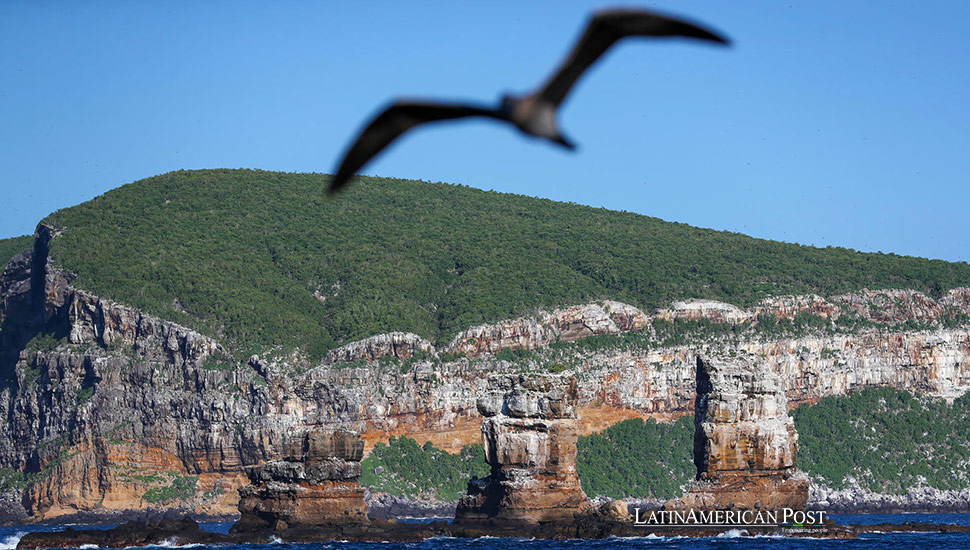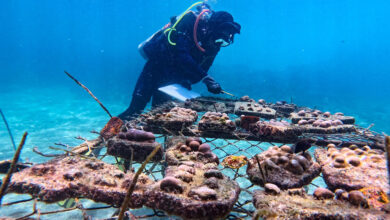Galápagos Science Plan Launched by Charles Darwin Foundation

The Charles Darwin Foundation (CDF) unveiled a five-year science plan to address the urgent threats and challenges facing the Galápagos Islands. The plan aims to ensure the archipelago’s sustainable future through focused scientific research and conservation efforts.
The Charles Darwin Foundation (CDF) has introduced a comprehensive “Science Plan,” a strategic blueprint that will guide the foundation’s efforts over the next five years to ensure the protection and sustainability of the Galápagos Islands. Located about a thousand kilometers off the coast of mainland Ecuador, the Galápagos archipelago is renowned for its unique biodiversity and historical significance in the study of evolution.
Announced during the celebration of the CDF’s 65th anniversary in Ecuador, the Science Plan identifies five key priority areas: biodiversity, bioinvasions, climate and ocean change, ecosystem resilience, and applying science to action. Rakan Zahawi, the executive director of the CDF, emphasized that this plan will serve as a “critical roadmap” to navigate the foundation’s conservation and research initiatives aimed at tackling the most pressing threats to the Galápagos Islands.
“Our objective is to address the urgent threats and challenges to the islands through targeted scientific research and conservation efforts,” Zahawi stated. “This plan is essential for ensuring a sustainable future for the Galápagos.”
As part of the anniversary event, the CDF presented a report on the impact of its actions in 2023. The report highlighted significant achievements, including the discovery of an extensive deep-water coral reef and the launch of an environmental education initiative. These efforts underscore the foundation’s ongoing commitment to preserving the unique ecosystems and biodiversity of the ‘enchanted islands ‘.
The CDF was established in 1959 to protect the fragile ecosystems of the Galápagos Islands and promote their sustainable development. Over the decades, the foundation has played a pivotal role in conservation and scientific research, contributing to the global understanding of island ecosystems and biodiversity.
Historical and Ecological Significance
The Galápagos Islands, a stunning archipelago comprising 13 large islands, six smaller islands, and 42 islets, boast a terrestrial area of just over 8,000 square kilometers and include a marine reserve of 138,000 square kilometers. In 1978, UNESCO declared the Galápagos a Natural World Heritage Site, a testament to the archipelago’s unparalleled natural beauty and ecological significance. The islands, named after the giant tortoises that inhabit them, are a haven for a remarkable diversity of flora and fauna, a true marvel of nature.
The Galápagos are often called natural laboratories due to their rich biodiversity and unique ecological conditions. These islands played a crucial role in developing Charles Darwin’s theory of natural selection, as they provided him with the critical observations and evidence needed to formulate his groundbreaking ideas on evolution.
The Galápagos Islands are a haven for over 7,000 endemic and native species, a staggering number that is unmatched anywhere else on our planet. This exceptional level of endemism underscores the critical need for continued conservation efforts and the significance of the Galápagos as one of the most important biodiversity hotspots in the world.
Biodiversity conservation is a cornerstone of the CDF’s Science Plan. The Galápagos Islands’ ecosystems are susceptible to environmental changes and human activities. Invasive species pose one of the most significant threats to the islands’ native flora and fauna. Introducing non-native species, either accidentally or intentionally, can disrupt ecological balance and lead to the decline or extinction of endemic species.
The CDF’s Science Plan focuses on identifying and mitigating the impacts of invasive species through rigorous scientific research and implementing effective management strategies. The foundation aims to protect the islands’ unique biodiversity from further harm by enhancing biosecurity measures and promoting community awareness.
Climate Change and Ocean Health
The Galápagos Islands are also vulnerable to the impacts of climate change and oceanic changes. Rising sea temperatures, ocean acidification, and altered weather patterns can profoundly affect marine and terrestrial ecosystems. The CDF’s Science Plan includes initiatives to monitor and study these changes, assess their impacts, and develop adaptive management strategies to enhance the resilience of the islands’ ecosystems.
“The resilience of the Galápagos ecosystems in the face of climate change is crucial for their long-term survival,” Zahawi emphasized. “Our research will focus on understanding these impacts and finding ways to mitigate them.”
Building ecosystem resilience is another priority area identified in the Science Plan. This involves restoring degraded habitats, protecting critical ecosystems, and enhancing the capacity of local communities to engage in conservation efforts. The CDF recognizes that sustainable conservation requires the active participation and support of the local population.
Recognizing the importance of community involvement, the foundation has initiated education and outreach programs. These programs aim to instill a sense of stewardship among the residents of the Galápagos, empowering them to protect their natural heritage. By involving communities in conservation activities and equipping them with the necessary knowledge and tools, the CDF is fostering a sustainable future for the islands.
Applying Science to Action
One key element of the CDF’s approach is applying scientific research to practical conservation actions. The foundation’s work is grounded in robust scientific methodologies and data-driven decision-making processes. By translating scientific knowledge into actionable strategies, the CDF seeks to address the most pressing environmental challenges facing the Galápagos.
This science-based approach ensures that conservation efforts are effective, efficient, and responsive to changing conditions. It also facilitates collaboration with other conservation organizations, government agencies, and international partners, enhancing the foundation’s overall impact.
Looking ahead, the CDF’s Science Plan represents a comprehensive and forward-thinking strategy for safeguarding the Galápagos Islands. The plan’s emphasis on biodiversity, bioinvasions, climate change, ecosystem resilience, and applying science to action reflects the multifaceted challenges and opportunities that lie ahead.
The Charles Darwin Foundation’s long history of conservation and research in the Galápagos provides a solid foundation for these future efforts. By building on past successes and adapting to new challenges, the CDF is not just continuing its vital work, but also inspiring hope for the future of one of the world’s most unique and valuable natural treasures, the Galápagos Islands.
The launch of the Charles Darwin Foundation’s Science Plan marks a significant milestone in the ongoing efforts to preserve the Galápagos Islands. As the foundation celebrates its 65th anniversary, it remains committed to addressing this extraordinary archipelago’s critical threats through targeted scientific research and innovative conservation strategies.
Also read: Ecuador’s Galapagos Islands Reveal Potential Hammerhead Nursery
The Galápagos Islands are a symbol of natural beauty and biodiversity and a testament to the enduring importance of scientific inquiry and environmental stewardship. The CDF’s Science Plan is a bold and necessary step toward ensuring that the Galápagos continue to inspire and thrive for future generations.




